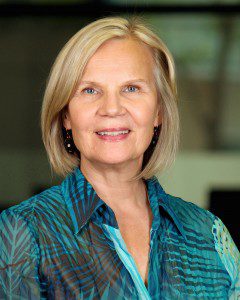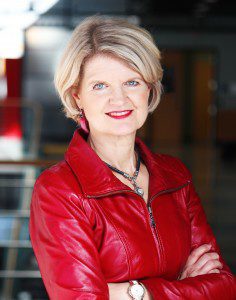By ROBERT LIWANAG
Staff Reporter
Ryerson journalism professors who travelled to Tanzania and Liberia for projects organized by Journalists for Human Rights (JHR) say they encountered inspiring students eager to learn, societies hungry for news and university journalism programs that faced some daunting challenges.
Ann Rauhala, an associate journalism professor and the associate director of the Ryerson Journalism Research Centre, spent five weeks in Tanzania, teaching a variety of classes and workshops at Tumaini University in Dar Es Salaam from March 11 to April 22. Journalist Dawn Cuthbertson, a Ryerson graduate, was the other member of the teaching team.
Associate professor Janice Neil visited Liberia in the fall of 2013, when she was on sabbatical. Co-sponsored by JHR and Ryerson International, the purpose of her trip was to advise the University of Liberia’s Department of Communications on curriculum changes. The university is located in the country’s capital, Monrovia.
Both Rauhala and Neil taught courses that emphasized hands-on learning, writing skills and the latest ways to construct and research news stories. They worked directly with instructors, while Neil also taught professional journalists.
[su_note note_color=”#e7e7e6″ text_color=”#000000″]Established in 2002, Journalists for Human Rights (JHR) is a Canadian media development organization that aims to help journalists build their capacity to report effectively on human rights and governance issues in their communities, as well as promote the idea that human rights are an important aspect for building a more equal and democratic society. The organization has currently worked in 21 countries, partnered with more than 250 African media organizations and trained more than 12,500 journalists and journalism students.[/su_note]
Rauhala noted that her time spent at Tumaini University was not just about teaching writing and reporting techniques, but also about highlighting the importance of journalism as a way to promote human rights. She described the students she met in Tanzania as some “of the most inspiring” she has taught.
“There was great enthusiasm and big smiles and I saw individual students in my classes who at the beginning were sort of sitting back, looking skeptical and uninterested, who were completely engaged and involved and enthusiastic by the end of the fifth workshop,” said Rauhala. “They had so much enjoyment participating instead of just sitting back and listening.”
Neil said she was asked by the chair of the communications department, Weade Kobbah Wureh, to make suggestions and work with instructors on ways to improve students’ skills. JHR had been operating in Liberia for four years before Neil’s visit, offering journalism training for Liberian journalists, many of them graduates of the university program.
“I gave a workshop and coaching to some of the instructors to talk to them about how they could incorporate more learning into their classes, even when the classes are really large,” said Neil. “The only kind of practical experience that students were exposed to during the time I was there was at the campus radio station.”
The journalism program suffered a major setback on March 21 when the radio station, LUX 106.6 FM, burned down due to an electrical spark from the building’s air conditioner. Largely run by volunteers, the station featured a variety of entertainment and interview programs. The university was unable to help with funding the rebuild because of financial difficulties. The station has yet to reopen.
Rauhala and Neil spoke to the Ryerson Journalism Research Centre about their experiences.
__________________________________________________________________________
In Tanzania with Ann Rauhala

What challenges did the School of Journalism face in Tanzania?
Rauhala: I would say there are several medium-sized challenges, and together, they can be problematic. For one thing, in Tanzania, Swahili is the first language and English is the second language. At [Tumaini University], English is the language of instruction. Tanzania has an incredible ethnic diversity. The way people speak Swahili and the way people speak English varies so widely that it’s really quite remarkable. I understood that there are more than 100 languages spoken in Tanzania – I did my research before I travelled. But I was really struck by how much that influenced people’s fundamental communication. Even your average Tanzanian might speak three or four languages. They might speak the tribal language that their father spoke, the tribal language that their mother spoke, then they would have perhaps done elementary school in Swahili and all along, they would have learned English as a fourth language. What happens is you never know how fluent people are going to be in any given language, and I was always amazed either by how fluent or how not fluent somebody’s spoken or written English was. That is an enormous barrier if you’re teaching, and it’s an even greater barrier if you’re teaching writing and communication.
What were you able to bring to the situation?
Rauhala: JHR had projects in Tanzania in the past, but they did not have a current program this winter. However, they established some contact with people teaching journalism in Tumaini. The people at Tumaini were very eager to have some outside experts come, talk to and teach their students. We offered a few particular kinds of courses and workshops we thought we could teach. They selected five or six that they thought would be the most useful for their students. When I was there, essentially, I taught a total of five workshops over the course of five weeks to mass communication students at Tumaini University. They were all undergraduates.
What did you learn from your experience?
Rauhala: I know it sounds almost naïve or corny, but I was truly inspired by the students whom we taught and whom I got to know a little. I was astounded by their commitment to learning new things, by their enthusiasm and their willingness to take chances. Our teaching practices in the West, and certainly my own personal teaching practices, are quite different from what’s the norm there. I’d use a lot of hands-on techniques in almost every workshop, what here we’d call “experiential learning.” That is not as common in Tanzania as it is here, and the students, frankly, loved it. There was great enthusiasm and big smiles and I saw individual students in my classes who at the beginning were sort of sitting back, looking skeptical and uninterested, who were completely engaged and involved and enthusiastic by the end of the fifth workshop. They had so much enjoyment participating instead of just sitting back and listening.
__________________________________________________________________________
In Liberia with Janice Neil

What challenges did the School of Journalism face in Liberia?
Neil: They had a curriculum that had been designed in 1984 that UNESCO (United Nations Education, Scientific and Cultural Organization) had set in [place]. But for much of the period between the late 1980s and 2003, there was a civil war. Many institutions weren’t running, the university had shut down and rebels lived in one of the campuses there. Things were pretty much destabilized, so the school had spent from the end of the civil war to 2013 to rebuild. One of the challenges was trying to make the curriculum reflect the way the media world was in 2013, as opposed to the mid-1980s. Looking at the curriculum change, one of the challenges was resources. They had just moved into a new building that had been built for the university by the Chinese government as a donation. They had one computer lab with about 25 computers for about 600 undergraduate students, which was brand new and had not been set up. There’s no electrical grid in the country, so there’s no stable electricity.
What were you able to bring to the situation?
Neil: The interest of the Chair and some of the instructors was to make journalism more of an experiential learning education. More hands-on, like what we do here. That was their aspiration. Not all of the students had laptops and the classes were also very large – around 60 [students], sometimes larger. To be able to teach writing to a class like that and to get these students to write assignments every week would be very difficult. There was also the question of whether they would do them at school or send them in, because not everybody had access to email. You couldn’t say to students, “Go write this story and email it in.” So they had to write it at home and bring it the following week. Part of what I did was talk about different techniques to kind of be able to teach writing and other skills to instructors that had large classes, and how they could do that. It wouldn’t be the same pace as it was here, but I felt because very few classes have actual practical components, it is very lecture-based. I felt [my techniques] were very productive.
What did you learn from your experience?
Neil: Every cliché you want to apply to working in the developing world. Aside from appreciating everything that we’ve got here – it’s an accident at birth where you end up in the world – I learned that there’s a really healthy media industry [in Liberia]. I couldn’t buy a copy of every single newspaper that was published every single day because there would just be too many. There were like between 11 and 15 newspapers that would be published every day. There are lots of community radio stations and there are up to five TV stations in Monrovia. Again, this is the privilege of being in the capital, so there’s a huge appetite for current affairs and for news. But it’s not surprising. Having gone through close to 20 years of civil war, what’s going on in their country is important, and there’s a huge appetite amongst students to be a part of it. They really have an eagerness to learn and contribute. Students make incredible sacrifices to be able to go to school. The campus, for a lot of students, is far away.
